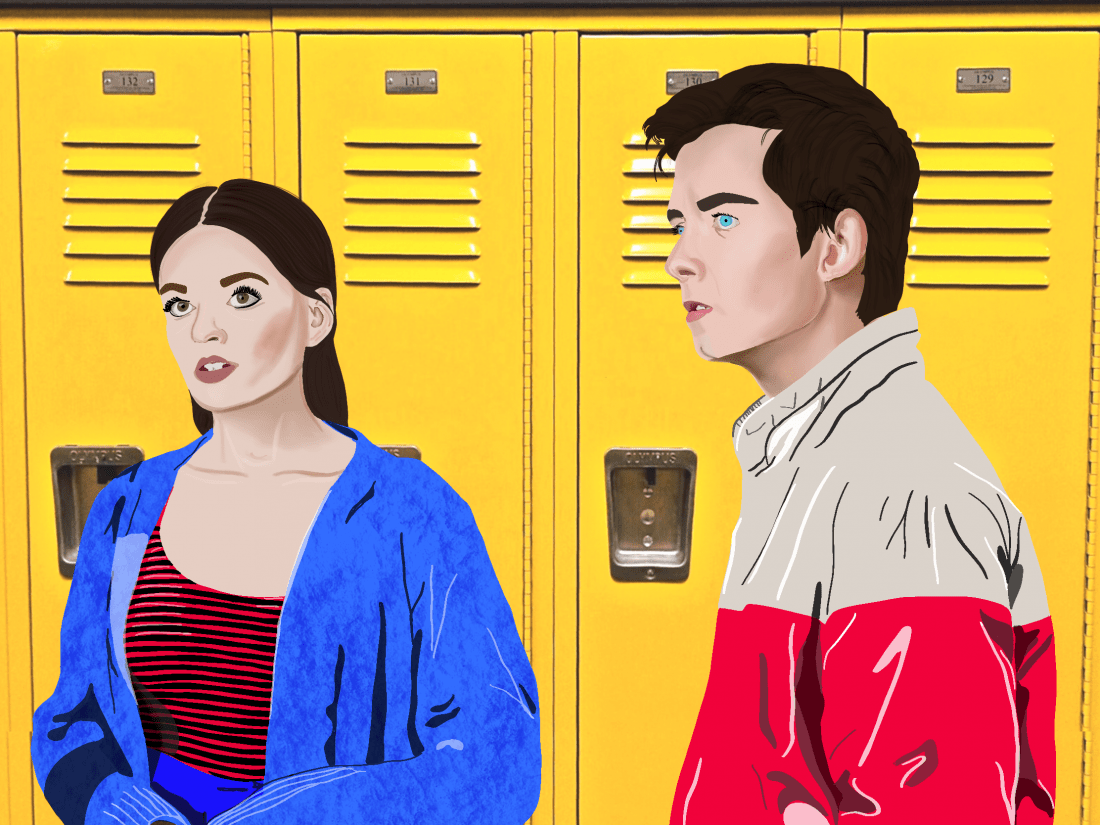
In the latest episodes of Netflix’s show Sex Education, we return to the ever scenic valleys of Moordale. We see old faces, some new ones and a fresh stack of issues to work through.
For a season with only eight episodes, this show covers a lot of ground. Sex Education continues with its theme of being both entertaining and educational.
This season, topics like healthy communication, solidarity among women, sexual assault, broken families, disability, self-harm and the many flaws of the sex-education curriculum are discussed, but it’s all stemming from that same high school setting.
Structurally, Sex Education has all the makings of a typical high school show — the evil principal, social stratification, a musical, parties, school-wide drama. However, the show inserts these ideas into digestible, relatable plotlines and with the amount of diversity the show has, there is something that feels new for everyone.
The show is filmed primarily in the beautiful, green and luscious Wye Valley of England and Wales, which is a nice break from the concrete towns and cities that similar shows are usually shot in.
Though there are many new ideas brought in, one thing the show keeps up with from season one is it’s not-quite-placeable timeline.
For example, the costumes generally seem to be from the ‘80s and ‘90s but the characters use modern technology, such as cell phones. There are no cars from after the turn of the century, and though some of the house decor is reminiscent of the ‘80s, others are unmistakably modern.
One interesting tidbit relating to the houses is that the ‘80s style house belongs to the Groff’s, who are old fashioned and rigid, with the father making most of the big decisions of the family. The mother of this family dresses in calf-length A-line skirts, pearls and a fifties hairstyle.
The modern houses belong to the likes of the Milburns, where the mother is a divorcee, infinitely more liberal and a sex therapist. She dresses in modern, more flattering clothes and has a shorter, laidback haircut. Details like this are what make the show so good. You learn something new with every rewatch.
Plotwise, season two opens with our protagonist, Otis Milburn, having finally come to terms with being a sexual being. He is no longer afraid of anything to do with sex, and the show depicts this with an opening montage of him masturbating excessively. He’s a lot less uptight this season.
This sets the tone for the rest of the season, which has a lot more different problems relating to sex and sexual performance to deal with. From broken relationships to mothers who have become unhappy with their sex lives to teens learning how to douche for the first time, this season goes into some of the more unsavoury aspects of sex and love.
On the school front, there’s a major outbreak of STI hysteria, causing the sex education syllabus to come under scrutiny. In comes sexual health expert and mother of our protagonist, Jean Milburn, to find out a way to fix it. In doing so, she brings to light a few of the problems surrounding sex education in high school and answers any questions that crop up along the way.
The lack of diversity and representation in the sex education curriculum is brought up when visiting exchange student and the latest high school heartthrob, Rahim, asks a teacher questions about sexual pleasure and gay sex, which he is unable to answer.
Jean answers his question and is a constant reminder that contrary to what some people might believe, thorough and inclusive sex education will not lead to sex-crazed teenagers, increases in STI or raised pregnancy and abortion rates.
On the contrary, sex education arms teens with the tools they need to become sexual beings in a safe and pleasurable away. This show depicts the importance of sex education, revealing that teens have safer, healthier sex and love practices and relationships when their questions are answered and they are not made to feel guilty about their choices.
Sex Education’s latest episodes also reiterate the importance of healthy communication for successful relationships. In relationships where there is a lack of healthy communication, we see conflict after conflict until the character finally decides to effectively communicate how they feel. That, or the relationship ends.
Additionally, Sex Education boasts a diverse and intersectional cast. From different sexual orientations to assorted races and cultures to varieties of age groups, this show strives to take more than a short cursory glance at characters that are often looked over. We see the stories of people who are bisexual, pansexual and asexual taken to a level beyond the surface.
We see the cultural barriers that might complicate learning about sex in a healthy manner at a young age being broken. We come to realize that the questions and issues surrounding sex never stop, that even people with children who have been married for years might still have some learning to do.
One particular cool thing this show does is how real it makes the characters.
From big aspects, like the deeper look into Maeve Wiley’s family life, to the more frivolous, like Otis always wearing that same tri-colour windbreaker — this show has a way of endearing its characters to the audience. Even when they’re not being their best selves.
It cannot be denied that Sex Education is a bit over the top and people are definitely less shy in the show than you might see in your average high school hallway. However, this show takes the experience of growing through your teen years and makes you wonder what it would’ve been like if you actually understood what healthy relationships and boundaries looked like.
From the innocent parts to the more raunchy bits, this show is definitely one worth watching.
—
Tomilola Ojo/ Culture Editor
Graphic: Shawna Langer/ Graphics Editor